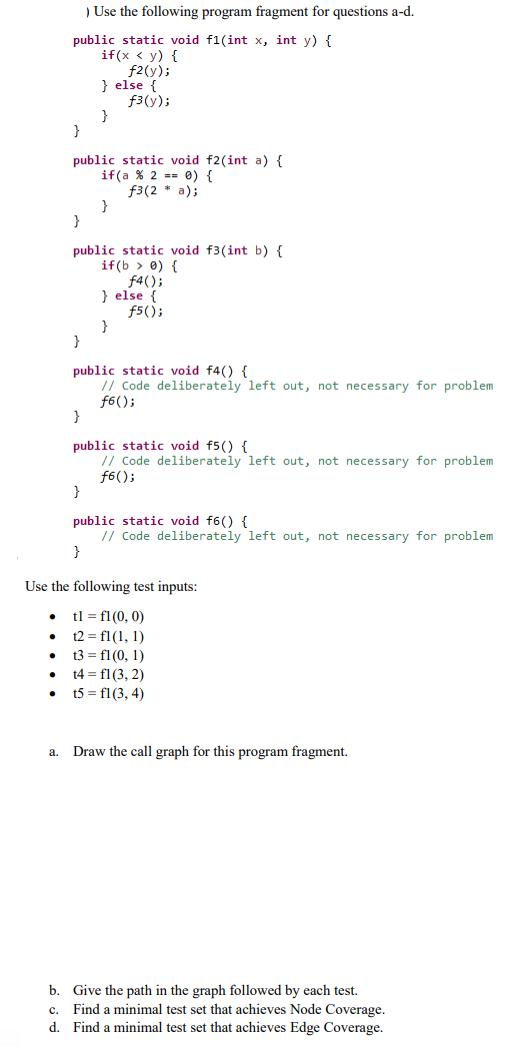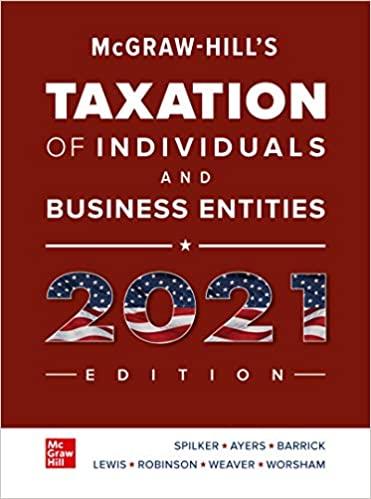Answered step by step
Verified Expert Solution
Question
1 Approved Answer
) Use the following program fragment for questions a-d. public static void f1(int x, int y) { if(x < y) { f2(y); } else

) Use the following program fragment for questions a-d. public static void f1(int x, int y) { if(x < y) { f2(y); } else { } } f3(y); public static void f2(int a) { if(a % 2 == 0) { f3(2 * a); } } public static void f3(int b) { if(b> 0) { f4(); } else { f5(); } } public static void f4() { } // Code deliberately left out, not necessary for problem f6(); public static void f5() { } // Code deliberately left out, not necessary for problem f6(); public static void f6() { } // Code deliberately left out, not necessary for problem Use the following test inputs: tl = fl(0, 0) 12=fl(1, 1) 13 = fl(0, 1) 14 fl(3,2) 15 = fl(3,4) a. Draw the call graph for this program fragment. b. Give the path in the graph followed by each test. c. Find a minimal test set that achieves Node Coverage. d. Find a minimal test set that achieves Edge Coverage.
Step by Step Solution
★★★★★
3.38 Rating (160 Votes )
There are 3 Steps involved in it
Step: 1

Get Instant Access to Expert-Tailored Solutions
See step-by-step solutions with expert insights and AI powered tools for academic success
Step: 2

Step: 3

Ace Your Homework with AI
Get the answers you need in no time with our AI-driven, step-by-step assistance
Get Started


